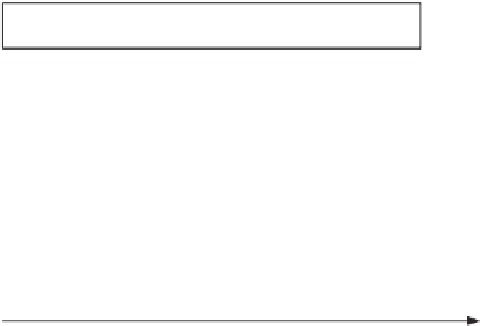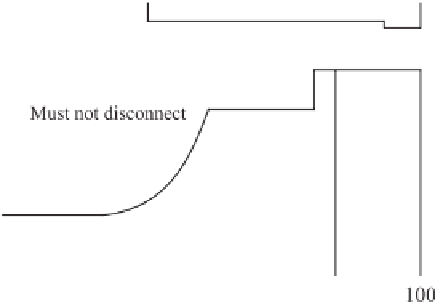Environmental Engineering Reference
In-Depth Information
The integration of renewable energy, distributed generation and storage systems, etc. into
smart grids via inverters may cause serious power quality issues. A major power quality issue
in these applications is the harmonics in the voltage provided by the inverters and the current
injected into the grid, which can be caused by the PWM switching effect, and the load current.
1.6.3.4 Neutral Line Provision
For applications in renewable energy, distributed generation and smart grids, there is often
a need to have a neutral line to work with inverters so that a current path is provided for
unbalanced loads. The provision of a neutral line also facilitates the independent operation of
the three phases so that the coupling effect among the phases is minimised.
1.6.3.5 Fault Ride-through
When the penetration level of renewable energy, distributed generation and storage systems,
etc. to the grid reaches a certain level, it is required to be able to successfully negotiate the short
faults that have occurred in the grid, e.g. voltage sags, voltage dips, phase jumps, frequency
variations, etc. (Rodriguez
et al
. 2007a; Song and Huang 2010; Timbus
et al
. 2006b). They
can only disconnect from the grid when the faults are serious. As an example, Figure 1.48
illustrates the boundaries for connecting/disconnecting wind turbines in the Danish power
system under different voltage disturbances with different time scales.
Figure 1.48
Operational boundaries for wind farms in the Danish power system under different volt-
age disturbances with different time scales.
Source:
Timbus A, Teodorescu T, Blaabjerg F, Liserre M
and Rodriguez P 2006 PLL algorithm for power generation systems robust to grid voltage faults in
Proceedings of the 37th IEEE Power Electronics Specialists Conference (PESC)
, pp. 1-7




































Search WWH ::

Custom Search